
Tested on a Windows 10 PC rig (RTX 3060, 16GB RAM, NVMe SSD), Star Overdrive blasts off like Jet Set Radio with rocket boosters—but even this hyper-speed hoverboard epic stumbles over its own ambition. Caracal Games scores major points in traversal and aesthetic flair, yet story pacing, repetitive puzzles, and a gruelling grind keep it from interstellar perfection.
Welcome to Elysia Prime, a water-scarce desert planet ringed by bioluminescent oceans and fractured floating islands. You play Nova Sparrow, an exiled engineer recruited by a resistance movement to topple a corporate overlord tapping the planet’s last fresh springs. Along the way, Nova reunites with drift-racer turned rebel leader Kai Renn, igniting a slow-burn romance that adds genuine stakes to the sky-high stunts. Their banter—equal parts witty and awkward—feels grounded, though the romance arc falters in the mid-game when plot beats circle back to ballistics and away from personal drama.

Water is life on Elysia Prime, and Caracal’s hydraulic engine simulates its scarcity through environmental puzzles: you’ll route rusted pipes, divert streams, and open floodgates to unlock ancient ruins. Four distinct biomes—crimson dunes, neon-lit citysprawls, salt-flat labyrinths, and the phosphorescent kelp forest—blend seamlessly, but story-gated exploration means you often revisit the same vista with new gear rather than chart truly fresh terrain.
After about six hours, I realized the narrative pacing oscillates between inspired high points (like an unforgettable boss escape atop a collapsing water dam) and filler fetch quests that ask you to collect “hydro-cores” across identical waypoints. Those shine-in-the-sun cinematic moments—the surge of dramatic music as the dam fractures, the emotional reunion on a drifting ice floe—hit hard. Yet I couldn’t shake the feeling that between these peaks lay too many dry plateaus.
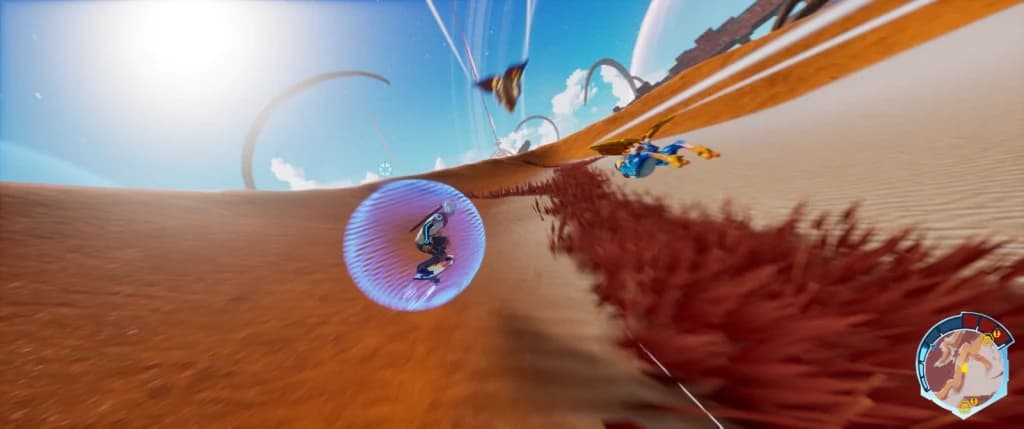
Snag your hoverboard seconds into the prologue and taste that succulent glide: silky acceleration, lofty air tricks, and boost combos so fluid they’d make SSX blush. After just one hour, I found myself seeking out boost gates like a moth to LED flames, chaining laps around neon-lined circuits until the world blurred into pure speed euphoria.
Ramps, grind rails, and half-pipes pepper every biome. At around five hours in, I finally unlocked the “Quantum Flip” trick—landing it for the first time felt monumental, like discovering a hidden asthma-defying lung capacity. Upgrades fall into three branches: speed, agility, and trick mastery. Investing early in trick mastery amps your air time so you can link double flips straight into wall runs, while speed upgrades let you break 70 km/h to trigger shock-wave boosts that clear debris and stun enemies.
Memorable sequence: I’ll never forget the time I hopped a rusted factory crane, pulled off a gravity-bending corkscrew, and boosted over a chasm just as a corporate gunship opened fire. That split-second decision to grind the gunship’s wing for extra boost felt like fate. But by hour 15, lap times felt almost too predictable—some tracks beg for more verticality or dynamic obstacles.
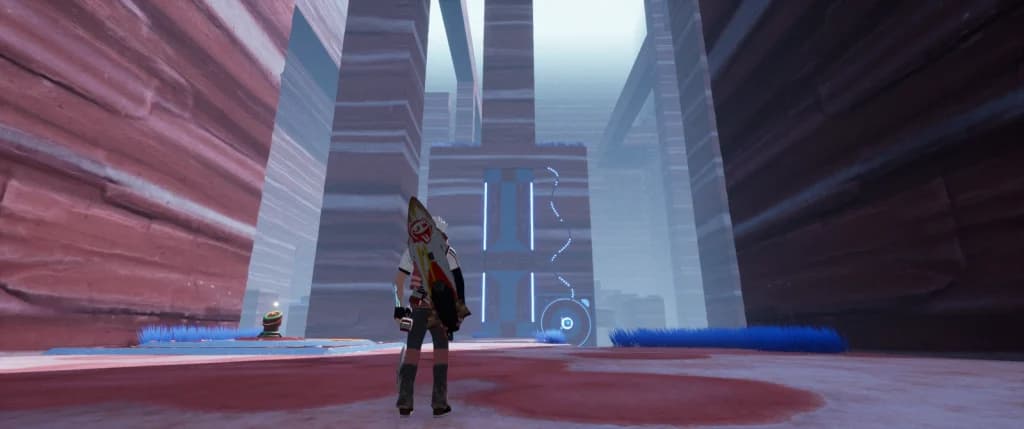
Combat fuses rock-star flair with sci-fi gadgetry. Wielding a 6-string keytar, you unleash sonic stabs, tremor chords, and tempo shields, each note synced to a dynamic soundtrack that swells when you near defeat or triumph. Combine your riffs with deployable turrets, glue bombs, and sentry drones for crowd control, then finish with a “Power Chord” ultimate that radiates shockwave damage.
Early on, I struggled with the 100 ms parry window—enemies felt like bullet hell pincushions. But by hour 10, a well-timed parry became second nature, letting me rip through armored brutes with a single chord-burst combo. Still, enemy variety caps out by mid-game: first you fight corporate drones, then hover-tank mechs, and finally shielded assassins. After 12 hours, it all felt like rearranging the same musical chairs.
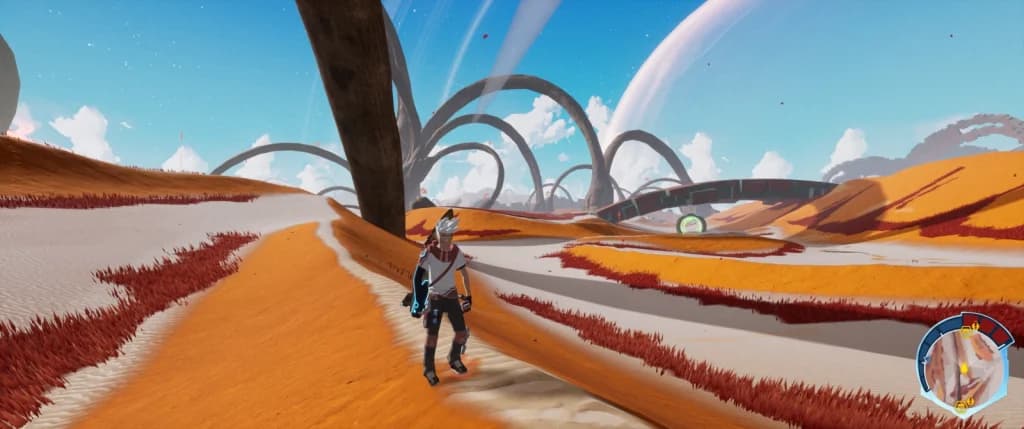
That said, one standout skirmish had me surrounded by four shielded drones in a flooded shrine—timing a parry mid-jump, then detonating a bomb mid-riff solo, was pure choreography. I wish there were more encounters that forced me to remix my loadout rather than lean on the same four-note riff.
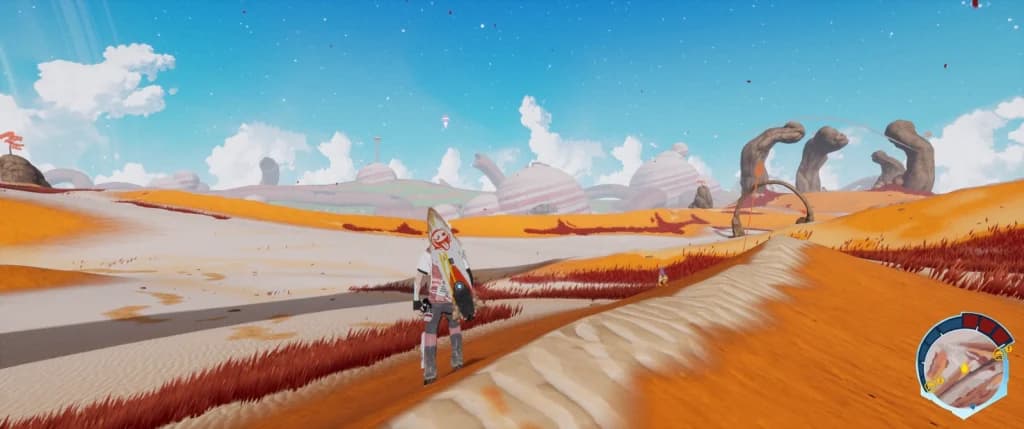
Star Overdrive’s progression is part marathon, part ritual. Collect 200 Power Tapes scattered across death-defying rails, win 60 timed races, and finish 50 puzzle shrines to unlock the ultimate board and max out Nova’s abilities. Each reward feels meaningful—a new hoverboard skin here, an extra boost bar there—but the grind drags. By hour 8, I found myself backtracking across dunes and desert canyons just to snag elusive tapes hiding behind pixel-perfect wall-rides.
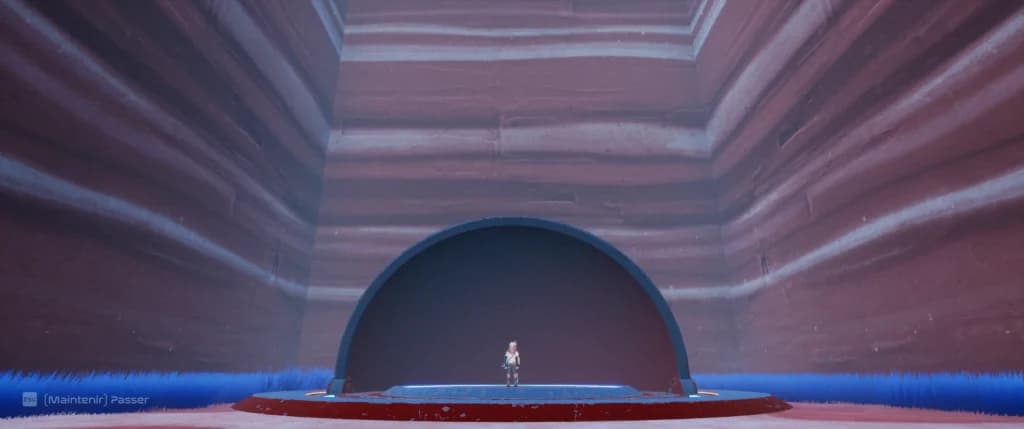
Upgrades branch into combat stims, board mods, and traversal perks. Unlock the “Echo Trail” upgrade, and your board leaves behind an afterimage that stuns enemies upon collision. Nab the “Hydro Thrusters” and you’ll skim water at breakneck speeds, opening shortcuts across flooded quarries. But the gating system often stops you from tackling more challenging areas until you’ve spent an hour or two grinding side challenges—an artificial speed bump that deflates momentum.
At first I struggled with prioritizing tape hunts over storyline missions, but by hour 12, I settled into a rhythm: alternate between plot quests and tape runs. That balance reignited my drive, though I couldn’t help but feel progress pacing could use a quick reboot around the mid-pillar, where everything stalls at upgrade tier two.

Temples blend puzzles, rail mazes, and weight-plate switches. The first two feel fresh—water mechanics that flood rooms, shifting platforms that ride hydro canals—but by the fifth shrine, the formula grows stale. I didn’t realize until shrine six that I’d been replaying near-identical floor patterns dressed in different hues. Water puzzles should’ve unlocked new tools—like a reversible current device—but instead rely on the same timed switch choreography.
Still, the highlight remains the Storm Cathedral, a cathedral-sized relic where you reroute waterfall torrents to power ancient lifts. That sequence—complete with a thunderclap soundtrack and a gravity-defying race to the summit—is a temple peak. Too bad we only see that level once.
After 3 hours: I was hooked on the board’s fluid motion, forgetting side missions and zoning into pure parkour bliss.
After 7 hours: Combat parries clicked into place, and I felt like a rock god turning corporate soldiers into confetti.
After 14 hours: The tape grind wore on me—I questioned why I wasn’t just blazing the main story and skipping the fetch quests.
Discovery moment: I didn’t realize until hour 9 that edge-grinds refill my boost meter—once I tapped into that, my fastest runs instantly dropped by 20 seconds.
Learning curve: At first I struggled with the rhythm-game parries, but by hour 10 I was chaining parry-combo-jump sequences without missing a beat.
On 1440p Ultra settings with DLSS 2.0, Star Overdrive locks at a buttery 60 fps in open world, then spikes to 120+ fps in trimmed-down indoor arenas. Load times hover around 6–8 seconds, and texture pop-in is minimal. But when particle storms swell—think dust devils kicking up sand or spray from hydro turbines—CPU-bound stutters crop up for a frame or two.
No crashes in my 18 hours of play, but controller mapping is locked to Xbox schema—you can remap buttons, but without full mouse support you’ll need a pad. Compared to Ratchet & Clank: Rift Apart, visuals hold their own on foliage and dynamic lighting, but lack Ray Tracing’s crisp reflections. On Switch, reports indicate frequent frame dips in city districts, so docked mode keys you to 30 fps at best.
Look, here’s the thing about Star Overdrive: it nails that hoverboard adrenaline with killer style, memorable water-puzzle highs, and a romance that feels genuine—even if it stumbles around the midpoint. While I loved the sonic-sanctioned parries and the neon horizons, I couldn’t shake the grindy tape hunts and templated puzzle shrines dragging the pace down.
Caracal Games has built a stellar foundation; smoothing out the design speed bumps could propel this into cult-classic territory. Even now, its core momentum rush will find its audience.
Get access to exclusive strategies, hidden tips, and pro-level insights that we don't share publicly.
Ultimate Gaming Strategy Guide + Weekly Pro Tips